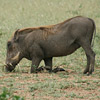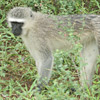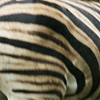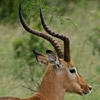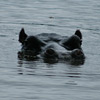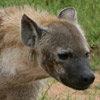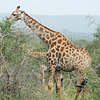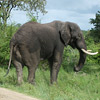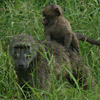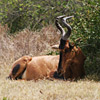Some of us tried Warthog Schnitzels at Victoria Falls.
Tag: Mammal
Large groups in bushveld. Herds of 6 to 20. Up to 100 in dry season. Single lambs born in spring. Need water every day. None found in Kalahari. Only males have horns. Jump very high. Babies very cute.
Spends most of day under water. Can be under water for up to 6 minutes. Herbivore. Grazes at night.
Kind of dog. Chatter and giggle in close groups. Born as twins. Born at any time. Cared for only by mother. Nocturnal. Hunt medium to large prey and scavenge.
Tallest living animal. Females and young live in hereds. Males are solitary or in small male herds. Men fight by swinging their heads at each other.
Usually have tusts. Femals have tusks. Babies hold their mommies’ tails. Trunk works as a hand while eating, i.e. they grab leaves and then put them in their mouths. Herds made up of females and young. Males live alone or in small herds (of males only). Drink every day. Eat 170-300kg of vegetation every day. Poos are the size of bread-loaves and do not smell at all. Single calf born every 4 to 5 years.
Load call is “Wa-Hoo”. Diurnal. Sleeps in trees or on rock ledges. Omnivores but also may hunt prey. Babies carried under mom’s tummy when you and after that on her back. Found everywhere except in deserts.
Our first exciting mammal sighting
